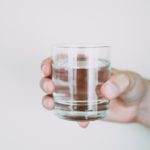Healthy eating:
Encouraging your child to eat a balanced and healthy diet with lots of vegetables, fruit, protein, dairy and carbohydrates, but low in fats, sugar and salt can help to lower your child’s risk of having tooth decay.
Food packaging can be confusing because sugar is written in a lot of different ways. These could include glucose, fructose, sucrose, dextrose, maltose, honey or syrups to name a few. Even if products are advertised as natural sugars, they can still be harmful to teeth.
For 4–6-year-olds the recommended maximum intake of free sugars is no more than 19g per day. This is equal to 5 sugar cubes.
For 6–10-year-olds the recommended maximum intake of free sugars is no more than 24g per day, which is equal to 6 sugar cubes.
For children 11 years over, the recommended maximum intake of free sugars is no more than 30g per day, which is equal to 7 sugar cubes.
It is important to avoid children having sugary food and drink before bedtime and to only give fruit juice or sweet foods at mealtimes. Although fruit juices count as one of your child’s 5 a day, even unsweetened fruit juice is sugary, so it is advised that consumption should be limited to no more than 150 mls a day.






